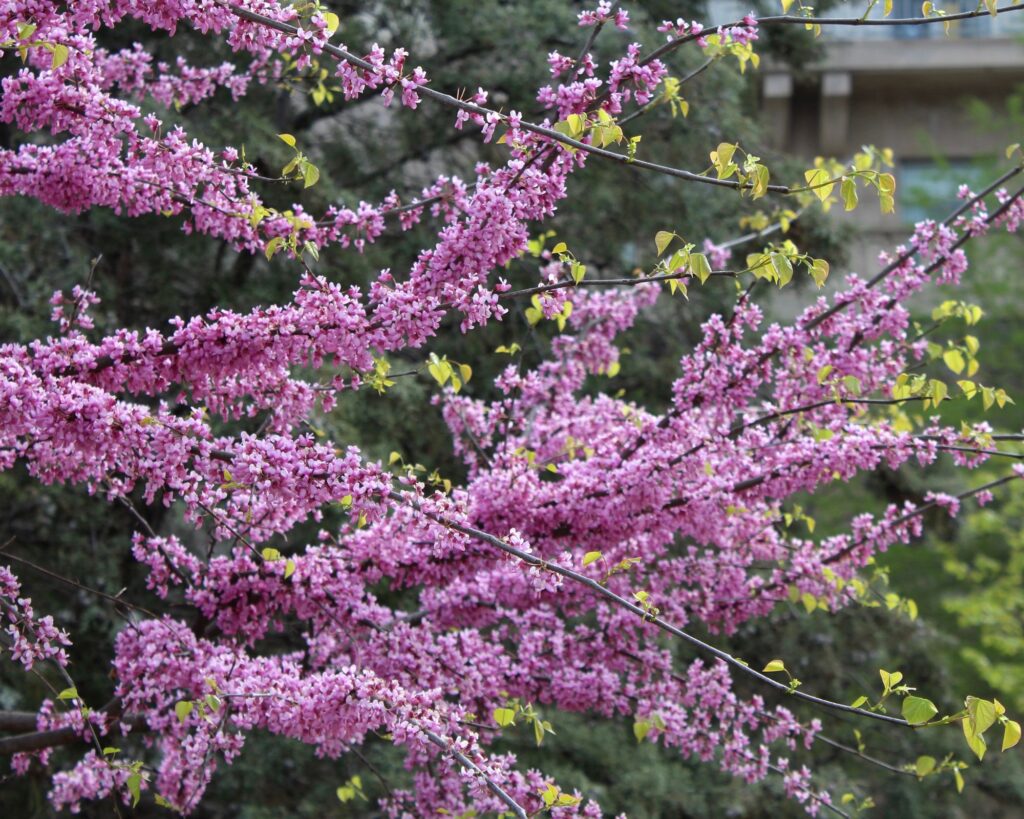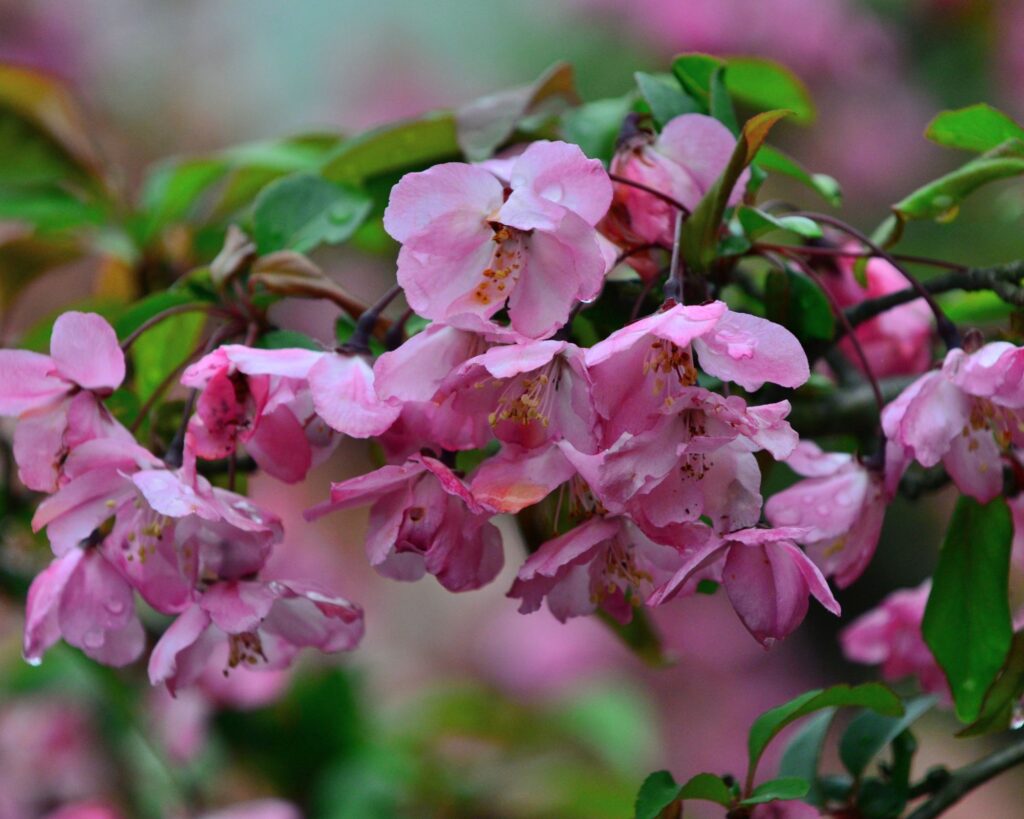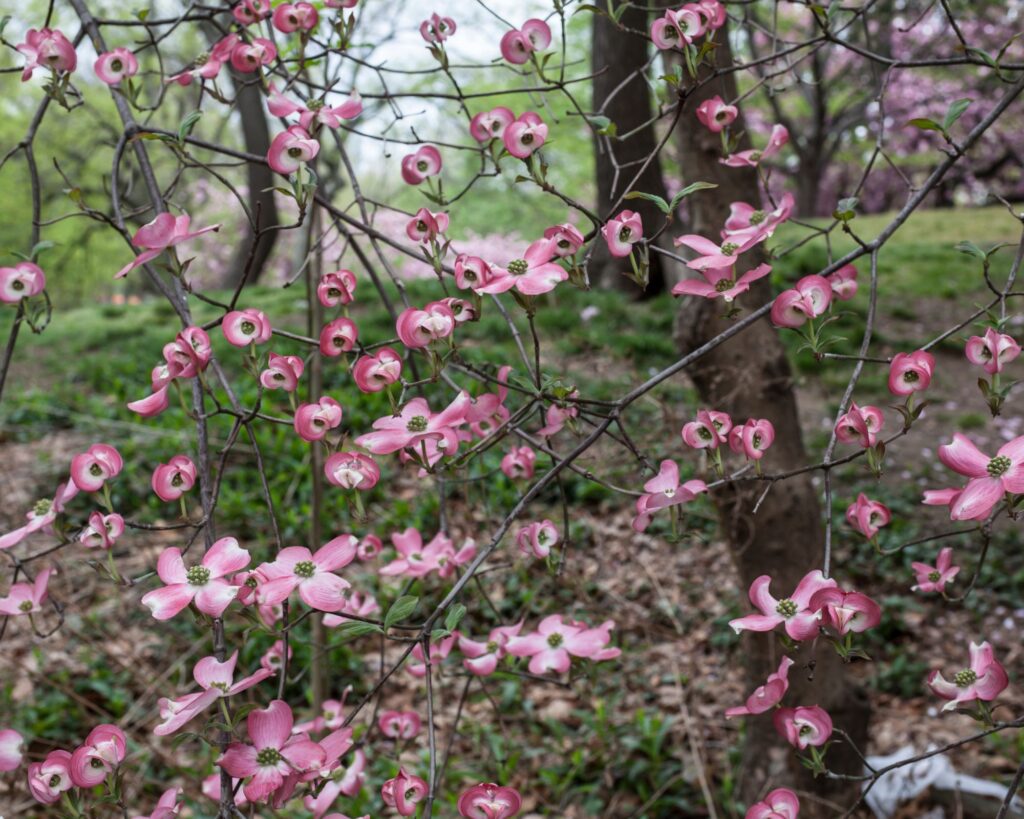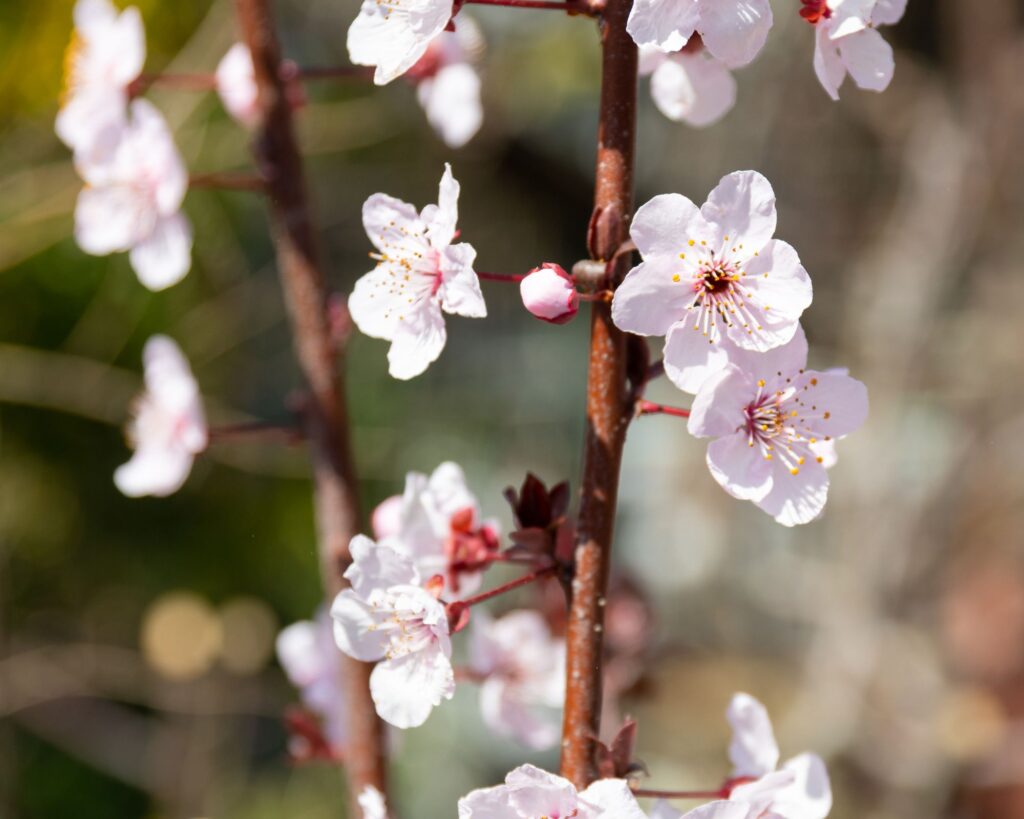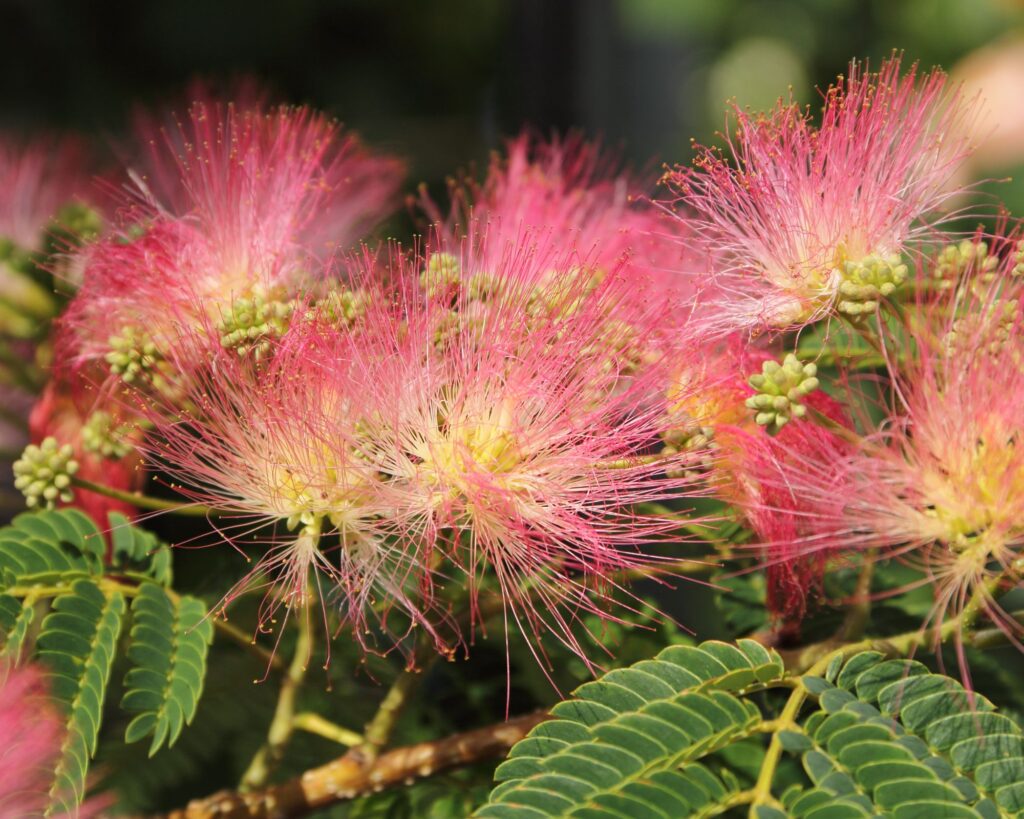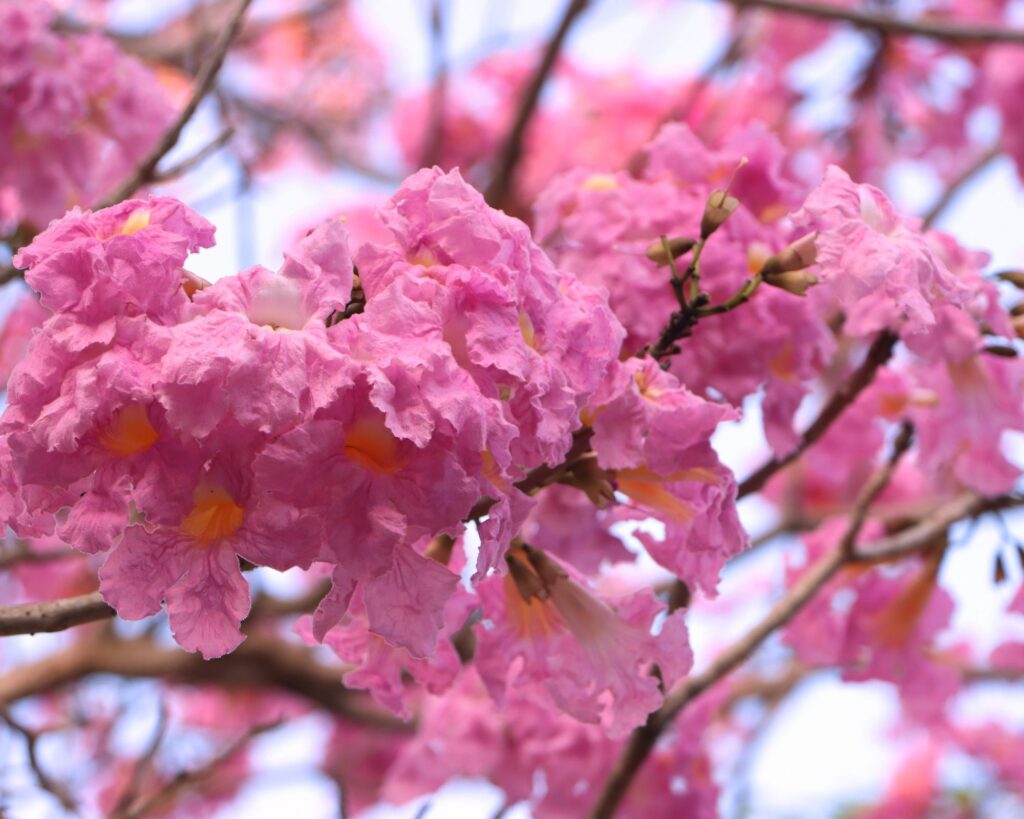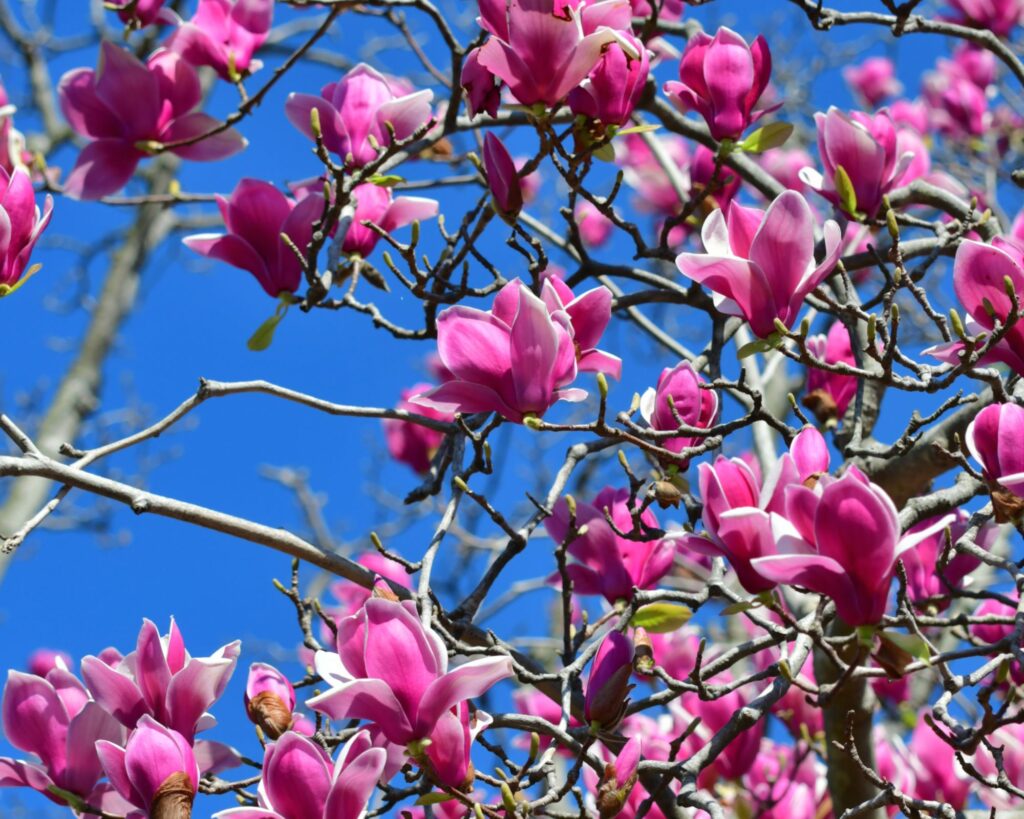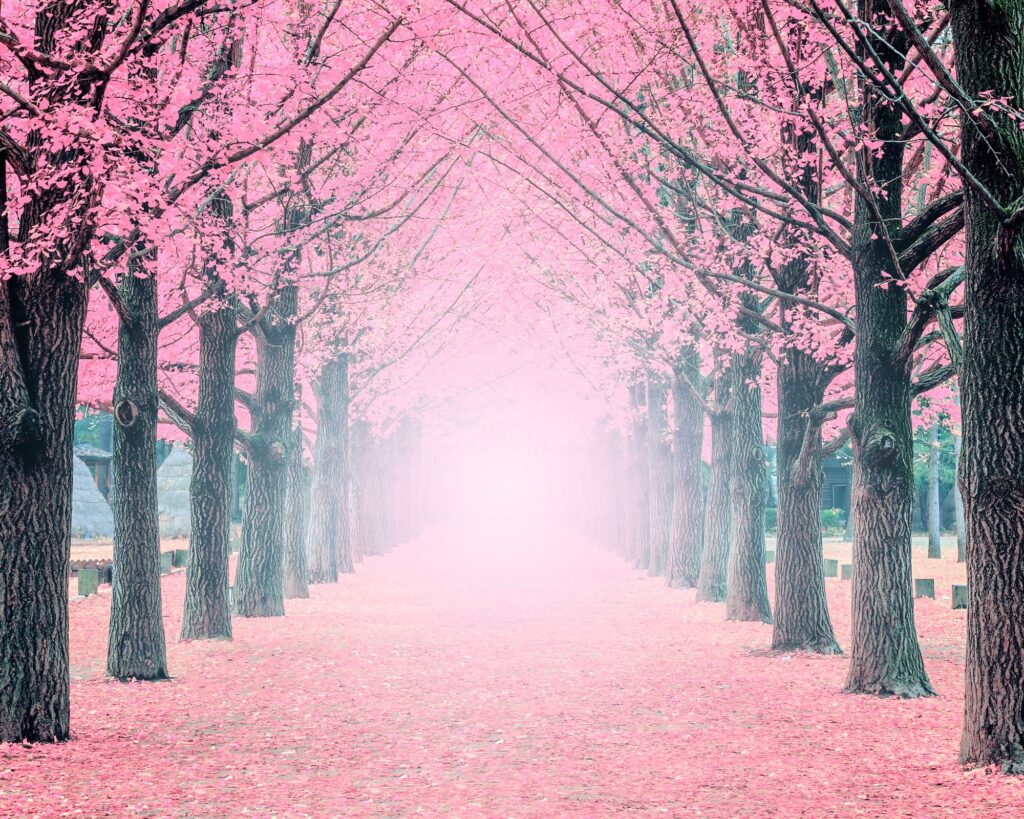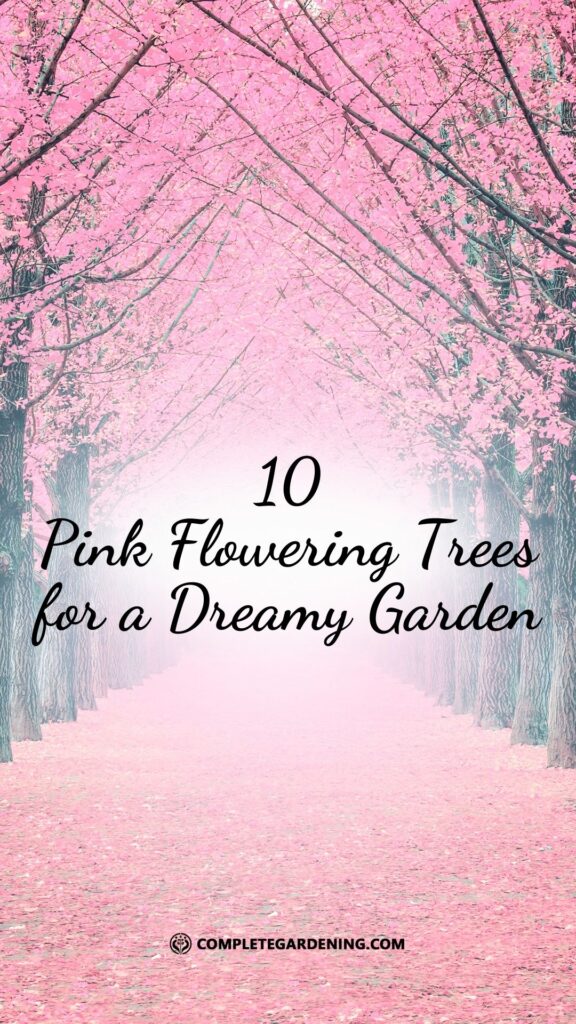A splash of pink in your garden can completely transform the space, creating an inviting, warm atmosphere that feels like a spring dream.
Pink flowering trees not only bring beauty but also attract pollinators, improve air quality, and add depth to any landscape.
This article explores some of the best pink flowering trees to consider, so you can pick the one that best suits your garden style and needs.
1. Cherry Blossom (Prunus serrulata)
The cherry blossom tree, known for its iconic blooms that symbolize renewal and beauty, is one of the most beloved pink flowering trees.
Originating in Japan, these trees have a powerful cultural and aesthetic presence. Their soft, pink, or white flowers create a magical atmosphere each spring, lasting for about two weeks.
Why You Should Plant One: Cherry blossoms are hardy, low-maintenance trees that thrive in a range of climates. They attract bees, butterflies, and other pollinators, supporting your garden’s biodiversity.
Cherry blossoms prefer full sunlight and well-drained soil, making them a manageable choice for most gardeners.
2. Eastern Redbud (Cercis canadensis)
The Eastern Redbud is celebrated for its early spring blooms, which cover the branches in small, pea-like, pink-to-magenta flowers.
This native North American tree is not only attractive but also adaptable to various soil types and conditions, making it a versatile choice for any garden.
Why You Should Plant One: Eastern Redbuds are highly adaptable and thrive in both full sun and partial shade. They grow well in diverse soil conditions, even tolerating clay soil, which can be challenging for other trees.
They’re relatively pest-resistant and provide excellent support to pollinators like bees and butterflies.
3. Crabapple (Malus)
Crabapple trees offer an explosion of pink, red, or white blossoms in spring, with pink being a top choice for many garden enthusiasts.
Beyond the floral display, crabapple trees provide small fruits that feed wildlife, and their branches offer seasonal interest year-round.
Why You Should Plant One: Crabapple trees are compact, making them ideal for smaller gardens.
They require little maintenance once established, and their beautiful blooms are matched by the added bonus of colorful autumn foliage and small fruits that wildlife loves.
4. Dogwood (Cornus florida)
Dogwoods, especially the pink varieties, are highly sought after for their spring blooms and delicate petals.
These blooms open up in shades of light to dark pink and look stunning against their dark green foliage.
Why You Should Plant One: Dogwoods are small, shade-tolerant trees, perfect for adding color to shadier areas of your garden. They also have an appealing layered structure, which adds visual interest even after the blooms have faded.
In addition, the red berries that appear later in the year attract birds, creating a lively atmosphere.
5. Flowering Plum (Prunus cerasifera)
Flowering plum trees are appreciated for their stunning pink to light purple blooms and deep purple foliage.
They are often used as ornamental focal points in gardens, with a flowering period that lasts slightly longer than some other flowering trees.
Why You Should Plant One: This tree thrives in full sun and is tolerant of drought once established. It also requires minimal maintenance, with an occasional prune to maintain its shape.
The flowering plum’s distinct color combination of pink blossoms and purple foliage makes it a striking addition to any garden.
6. Mimosa Tree (Albizia julibrissin)
The mimosa tree, also known as the silk tree, has delicate, feathery flowers that bloom in soft shades of pink. Their unique structure and tropical appearance make them an eye-catching feature in any landscape.
The flowers have a faint, pleasant fragrance and attract hummingbirds and butterflies.
Why You Should Plant One: Mimosa trees thrive in warm climates and adapt to a range of soil types, though they prefer well-drained soil.
They’re fast-growing, making them ideal if you’re looking for quick impact in your garden. Their fern-like leaves create a soft, breezy feel in the garden that’s truly unique.
7. Saucer Magnolia (Magnolia x soulangeana)
The saucer magnolia is a showstopper, producing large, cup-shaped blooms in pink and white. This tree blooms early in spring, providing vibrant color before many other plants begin to awaken.
Its elegant, tulip-shaped flowers make it a favorite for formal and informal garden designs alike.
Why You Should Plant One: Saucer magnolias are hardy and can tolerate a range of climates, making them versatile for different garden styles. They thrive in full sun to partial shade and benefit from rich, moist soil.
This tree is an excellent choice for creating an early-season focal point that adds lasting impact.
8. Pink Trumpet Tree (Tabebuia rosea)
The Pink Trumpet tree, native to Central and South America, is a bold choice that brings a tropical feel to any garden. It produces clusters of trumpet-shaped pink flowers that cover the entire tree, creating an impressive display.
Why You Should Plant One: Pink Trumpet trees are drought-tolerant once established and grow well in warmer climates.
They’re perfect for gardeners looking to make a statement with a tropical vibe. They attract bees and butterflies, boosting biodiversity in your garden.
9. Silk Floss Tree (Ceiba speciosa)
The Silk Floss tree, with its vibrant pink flowers and unique thorny trunk, is a dramatic choice that adds texture and color. Its bright, funnel-shaped flowers have contrasting white centers, making each bloom stand out.
Why You Should Plant One: This tree thrives in warm climates and is drought-resistant. Its unusual appearance makes it a conversation piece, and its flowers attract hummingbirds and butterflies.
The Silk Floss tree’s striking beauty and unique trunk make it ideal for gardeners looking to add a unique character to their landscape.
10. Japanese Magnolia (Magnolia liliiflora)
The Japanese Magnolia, or “lily magnolia,” is another fantastic pink flowering option. Known for its bold, pink flowers with a slight purple hue, it blooms later in the spring, extending the flowering season in your garden.
Why You Should Plant One: Japanese Magnolias are compact and perfect for smaller gardens. They’re tolerant of partial shade and prefer well-drained, slightly acidic soil.
This tree’s graceful blooms and deep color are perfect for adding charm to your garden, even in limited spaces.
Choosing the Right Pink Flowering Tree for Your Garden
When selecting a pink flowering tree, consider your climate, garden space, and the amount of maintenance you’re comfortable with.
Most of these trees will thrive in well-drained soil and require sunlight, though each has unique characteristics.
For a low-maintenance garden, consider trees like the Flowering Plum or the Eastern Redbud.
If you’re aiming for an exotic, tropical feel, the Silk Floss or Pink Trumpet tree will make a bold statement.
Each of these trees offers something unique, from the classic elegance of cherry blossoms to the tropical allure of the Mimosa.
Adding one of these beauties to your garden won’t just boost its aesthetic appeal – it will also bring life and biodiversity.
So, whether you’re looking to add a subtle touch of pink or a striking focal point, one of these pink flowering trees will surely be the perfect addition to your garden.


